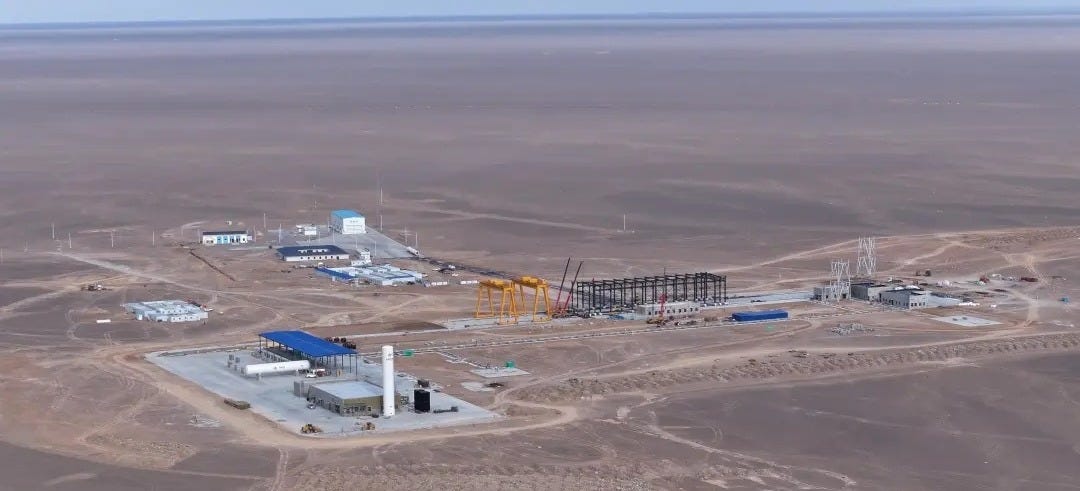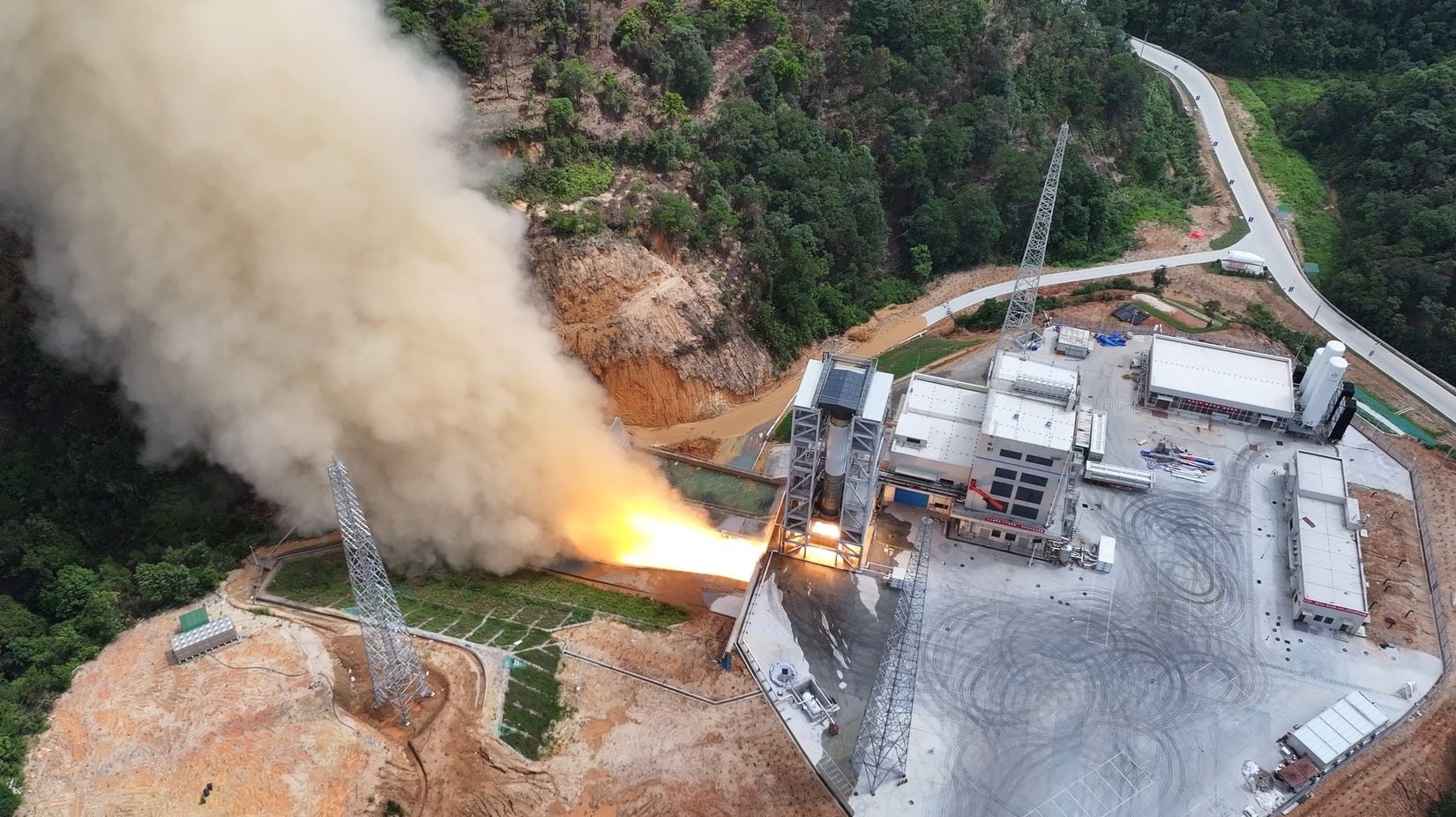Kinetica-2 Moves Toward Launch With Major Booster Test
CAS Space is moving closer to flying its liquid-fuelled launch vehicle.
CAS Space has fired up one of the first-stage boosters of its Kinetica-2 launch vehicle on June 11th, at the company’s dedicated engine firing center in Conghua (从化区), Guangzhou (广州市), Guangdong (广东) province.
This test utilized what is believed to be Kinetica-2’s central first-stage booster, which will be flanked by two boosters during flight, equipped with three YF-102 engines burning rocket-grade kerosene and liquid oxygen. For the test, the three engines fired for approximately 169 seconds while generating around 255 tons of thrust.
CAS Space proclaimed that this test was a major milestone in the development of Kinetica-2 ahead of its debut flight in September, three months from now. Following this test the company stated:
“This test fully verified the coordination and matching between the rocket's first-stage pressurization and delivery system and the engine system, as well as the correctness of the system interfaces such as power, structure, avionics, and launch support.”
If there are any problems with this translation please reach out and correct me.
The static fire also inaugurated CAS Space’s new engine and first-stage test firing facility in Conghua. This facility is said to be the first engine and propulsion test center in southern China, while being capable of supporting engine tests that generate 200 tons of thrust or stage tests that generate 400 tons of thrust. At the facility, there is one stand for first-stage testing and two for engine testing. Political support from the Guangzhou city government for the facility was received in 2023, according to CAS Space.
Kinetica-2’s first-stage static fire follows manufacturing and testing of hardware for the vehicle throughout late 2024 and the first months of this year. Six months before this week’s test, the second-stage’s YF-102V engine was fired up for ten minutes to simulate a flight profile.
Meanwhile at the Jiuquan Satellite Launch Center, CAS Space is expanding its launch facilities in support of Kinetica-2’s debut flight. Work began on Kinetica-2 facilities back in August 2024, and in April of this year the vehicles transporter-erector was tested with a mechanical mockup of the launch vehicle.

Once facilities at Jiuquan are ready, possibly next month, Kinetica-2 could perform its debut flight in September. That debut flight is expected to carry the Qingzhou (轻舟) cargo resupply spacecraft, which will later serve the Tiangong Space Station.
It’s unknown how much hardware CAS Space currently has for Kinetica-2 missions, but the company says they have plenty for an undisclosed number of upcoming missions.
Kinetica-2 is planned to be reusable but will be flying in an expendable configuration for the first few years of operational missions. A reusable variant of the rocket, featuring landing legs, grid fins, and a reusable rocket engine, is set to fly by 2028.



